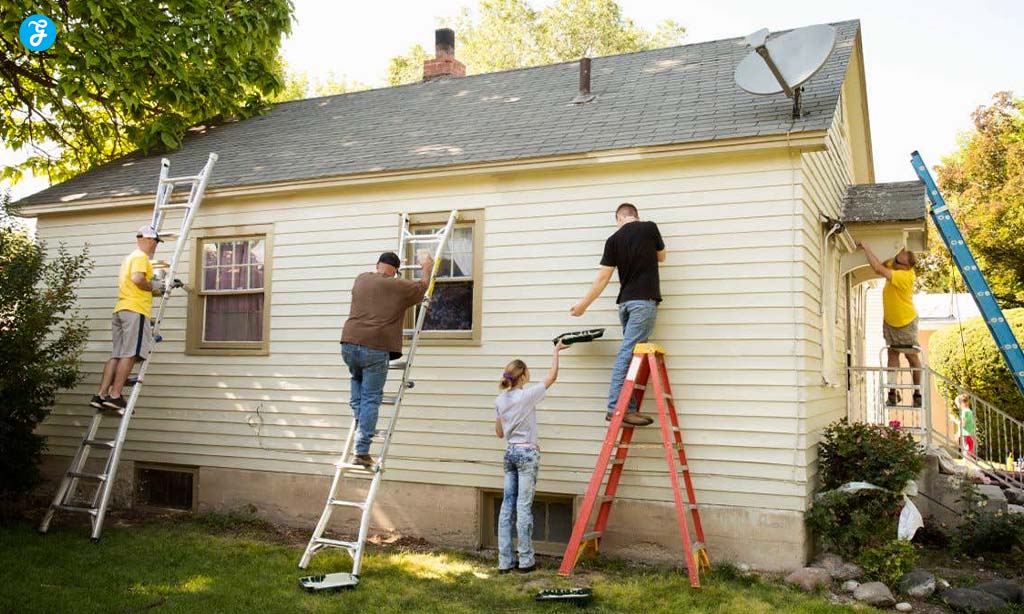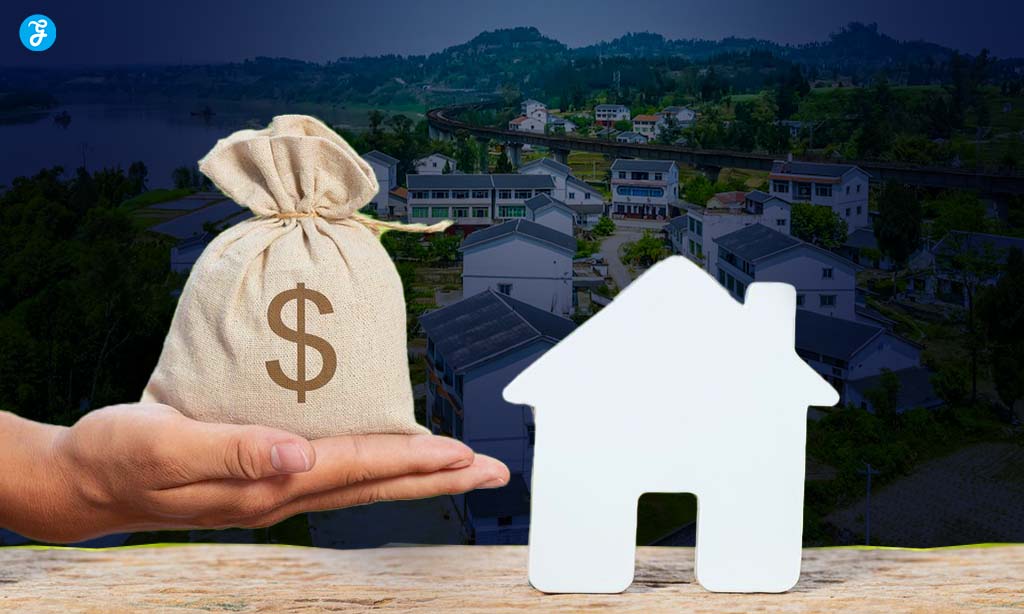Imagine walking into a run-down house, seeing past its flaws, and envisioning a beautiful home that someone would love to buy. This is the essence of property flipping – a popular real estate investment strategy that has captured the imagination of many aspiring entrepreneurs. But is it as easy as it looks on TV shows? Can you really make a fortune by buying, renovating, and selling houses?
In this comprehensive guide, we’ll pull back the curtain on the world of property flipping. We’ll explore the nuts and bolts of this exciting venture, from finding the right property to selling it for a profit. Whether you’re a complete novice or have some real estate experience, this guide will provide you with valuable insights and practical tips to help you navigate the property flipping landscape.
So, grab a cup of coffee, get comfortable, and let’s embark on this journey to understand how you can turn dilapidated houses into profitable investments. Remember, successful property flipping isn’t just about making quick money – it’s about creating value, improving communities, and building a sustainable business. Are you ready to flip your way to success? Let’s dive in!
Understanding Property Flipping
Property flipping is more than just buying a house and selling it for more money. It’s a strategic process that involves:
- Identifying undervalued properties
- Purchasing these properties at below-market prices
- Renovating and improving the properties to increase their value
- Selling the upgraded properties for a profit
The key to successful flipping lies in the margin between your total costs (purchase price + renovation costs + holding costs) and the final selling price. This margin is your potential profit.
Why People Flip Properties
- Quick profits: Unlike traditional real estate investments, flipping can yield returns in months rather than years.
- Creative outlet: For those who enjoy home improvement, flipping offers a chance to transform properties.
- Market exploitation: Flippers can capitalize on market inefficiencies and rising property values.
- Business opportunity: Successful flippers often turn their hobby into a full-fledged business.
Risks of Property Flipping
While flipping can be profitable, it’s not without risks:
- Market changes: A sudden downturn in the real estate market can erode potential profits.
- Unexpected costs: Renovations often uncover hidden problems, leading to budget overruns.
- Time overruns: Delays in renovation or sale can increase holding costs and reduce profits.
- Regulatory issues: Flipping too many properties too quickly can lead to scrutiny from tax authorities.
Finding the Right Property
The success of your flip largely depends on choosing the right property. Here’s how to go about it:
Research Your Target Market
- Study local real estate trends: Look at historical price data, average days on market, and price-to-rent ratios.
- Understand neighborhood dynamics: Is the area up-and-coming or declining? Are there plans for new developments or infrastructure improvements?
- Know your buyer: Who’s likely to buy in this area? Young professionals? Families? Retirees? This will influence your renovation decisions.
Look for Properties with Potential
- Structural integrity: Focus on homes with good bones. Major structural issues can quickly eat into your profits.
- Cosmetic fixes: Properties that need mainly cosmetic updates often offer the best return on investment.
- Outdated features: Homes with outdated kitchens or bathrooms can be great candidates for profitable updates.
Explore Multiple Sources
- MLS (Multiple Listing Service): Work with a realtor to access this comprehensive database.
- Online real estate platforms: Websites like Zillow, Redfin, and Realtor.com can be goldmines for potential flips.
- Foreclosures and auctions: These can offer great deals but come with higher risks. Do your due diligence!
- Direct mail campaigns: Target homeowners in areas you’re interested in.
- Networking: Build relationships with real estate agents, contractors, and other investors.
- Driving for dollars: Drive around neighborhoods looking for distressed properties.
Red Flags to Watch Out For
- Foundation issues
- Extensive water damage
- Outdated electrical systems
- Pest infestations
- Bad locations (e.g., next to a noisy highway)
Remember, your goal is to find a property that you can buy at a low enough price to cover purchase costs, renovation expenses, holding costs, and still leave room for a healthy profit.
Analyzing the Deal
Once you’ve found a potential property, it’s crucial to analyze the deal thoroughly. This step can make or break your flip.
The 70% Rule in Detail
The 70% rule is a quick way to estimate a property’s maximum purchase price. Here’s how it works:
- Estimate the After Repair Value (ARV): This is what you expect to sell the property for after renovations.
- Multiply the ARV by 0.7 (70%).
- Subtract estimated repair costs.
The result is the maximum you should pay for the property. Let’s break it down with an example:
- ARV: $300,000
- $300,000 x 0.7 = $210,000
- Estimated repairs: $50,000
- Maximum purchase price: $210,000 – $50,000 = $160,000
This rule helps ensure you have enough margin to cover all costs and still make a profit.
Detailed Cost Analysis
While the 70% rule is useful, a detailed cost analysis is essential. Here’s what to include:
- Purchase costs:
- Purchase price
- Closing costs (typically 2-5% of purchase price)
- Title insurance
- Property inspection fees
- Renovation costs:
- Materials
- Labor
- Permits and inspections
- Dumpster rental and debris removal
- Holding costs:
- Mortgage payments
- Property taxes
- Insurance
- Utilities
- HOA fees (if applicable)
- Selling costs:
- Real estate agent commissions (typically 5-6% of sale price)
- Closing costs
- Potential buyer concessions
- Miscellaneous costs:
- Marketing expenses
- Travel costs
- Unexpected repairs (always budget for these!)
Estimating After Repair Value (ARV)
Accurately estimating ARV is crucial. Here are some methods:
- Comparative Market Analysis (CMA): Look at recent sales of similar properties in the area.
- Price per square foot method: Calculate the average price per square foot of comparable properties and apply it to your property.
- Professional appraisal: While it costs money, it can provide a more accurate estimate.
Profit Margin Considerations
Aim for a profit margin of at least 20% to account for unexpected expenses and market fluctuations. Remember, your actual profit will be less after taxes.
Financing Your Flip
Securing the right financing can significantly impact your flip’s profitability. Let’s explore your options in more detail:
Cash
Pros:
- No interest payments
- Faster closing process
- More attractive to sellers
Cons:
- Ties up a large amount of capital
- Limits the number of properties you can flip simultaneously
Traditional Mortgage
Pros:
- Lower interest rates
- Longer repayment terms
Cons:
- Strict qualification requirements
- Lengthy approval process
- May not cover renovation costs
Hard Money Loans
Pros:
- Quick approval process
- Can cover purchase and renovation costs
- Lenient qualification requirements
Cons:
- High interest rates (typically 10-15%)
- Short repayment terms (usually 6-18 months)
- May require a down payment
Private Money Lenders
Pros:
- Flexible terms
- Can be cheaper than hard money loans
- Often willing to fund multiple projects
Cons:
- Requires networking to find lenders
- Terms can vary widely
- May expect a share of the profits
Home Equity Line of Credit (HELOC)
Pros:
- Low interest rates
- Tax-deductible interest
- Flexible use of funds
Cons:
- Puts your primary residence at risk
- Approval based on home equity and credit score
- Can take weeks to set up
Fix-and-Flip Loans
Some lenders offer specialized fix-and-flip loans:
Pros:
- Designed specifically for house flipping
- Can cover purchase and renovation costs
- Often have faster approval processes than traditional mortgages
Cons:
- Higher interest rates than traditional mortgages
- May have prepayment penalties
- Often require experience in house flipping
Remember, the best financing option depends on your specific situation, including your credit score, available capital, and flipping experience.
Renovating the Property
Renovation is where you add value to your property. The key is to make smart, cost-effective improvements that appeal to potential buyers.
Creating a Renovation Plan
- Assess the property’s condition thoroughly
- Identify must-do repairs (structural issues, code violations)
- List value-adding improvements
- Prioritize renovations based on budget and potential ROI
- Create a timeline for renovations
Focus on High-ROI Renovations
According to the 2021 Cost vs. Value Report, these renovations offer the best return on investment:
- Garage Door Replacement – 93.8% ROI
- Manufactured Stone Veneer – 92.1% ROI
- Minor Kitchen Remodel – 72.2% ROI
- Siding Replacement (Fiber-Cement) – 69.4% ROI
- Window Replacement (Vinyl) – 68.6% ROI
Kitchen and Bathroom Updates
These rooms often make or break a sale. Focus on:
- Updating cabinets (refacing if possible)
- Installing new countertops
- Replacing outdated fixtures
- Adding a fresh coat of paint
- Updating lighting fixtures
Curb Appeal
First impressions matter. Improve curb appeal with:
- Fresh exterior paint
- Landscaping improvements
- New front door
- Clean and repaired driveway
- Updated exterior lighting
Energy Efficiency Upgrades
Energy-efficient features can be strong selling points:
- Install programmable thermostats
- Add insulation
- Replace old windows with energy-efficient models
- Upgrade to energy-efficient appliances
Working with Contractors
- Get at least three bids for major work
- Check references and past work
- Ensure contractors are licensed and insured
- Use detailed contracts specifying work to be done, materials to be used, timeline, and payment schedule
- Regular communication is key to staying on schedule and budget
DIY vs. Professional Work
While DIY can save money, it’s not always the best choice:
DIY-friendly tasks:
- Painting
- Basic landscaping
- Simple tiling
- Installing fixtures
Leave to professionals:
- Electrical work
- Plumbing
- Structural changes
- Roofing
Remember, time is money in house flipping. Sometimes it’s more cost-effective to hire professionals and focus your time on managing the project or finding the next deal.
Selling the Property
After all your hard work, it’s time to sell the property and realize your profit. Here’s how to maximize your returns:
Timing the Sale
- Consider seasonal trends in your market
- Be aware of local events or developments that could impact property values
- Don’t rush to sell if the market is unfavorable, but remember that holding costs eat into profits
Pricing Strategy
- Research recent sales of comparable properties
- Consider getting a professional appraisal
- Price competitively to sell quickly, but don’t undervalue your improvements
- Be prepared to adjust your price if necessary
Marketing Your Flip
- Professional photography: High-quality photos are crucial for online listings
- Virtual tours: These can attract more potential buyers, especially out-of-town buyers
- Social media marketing: Use platforms like Facebook and Instagram to showcase your flip
- Open houses: These can create buzz and urgency among potential buyers
- Highlight key features: Emphasize your value-adding renovations in all marketing materials
Staging the Property
Staging can help buyers envision themselves living in the home:
- Remove all personal items
- Use neutral, modern decor
- Ensure each room has a clear purpose
- Maximize natural light
- Don’t forget about outdoor spaces
Working with a Real Estate Agent
A good agent can be invaluable:
- They have access to the MLS and a network of potential buyers
- They can handle showings and open houses
- They’re skilled at negotiating with buyers
- They can navigate the complexities of closing a sale
Negotiating Offers
- Be prepared to counteroffer
- Consider the strength of the offer, not just the price (e.g., all-cash offers, buyers with pre-approved mortgages)
- Be willing to offer incentives to close the deal (e.g., covering closing costs)
Closing the Sale
- Work with a real estate attorney to review all documents
- Be prepared for last-minute issues (e.g., inspection problems, financing fall-through)
- Have all necessary documents ready (e.g., receipts for renovations, permits)
Legal and Tax Considerations
Flipping houses involves various legal and tax implications that you need to be aware of:
Legal Considerations
- Business Structure: Consider forming an LLC to protect your personal assets
- Permits and Licenses: Ensure all renovation work is properly permitted
- Disclosure Laws: Be aware of your state’s laws regarding disclosing known issues with the property
- Fair Housing Laws: Familiarize yourself with these to avoid discrimination in your selling practices
- Contract Law: Use professional, legally-binding contracts for all transactions
Tax Implications
- Property Taxes: You’re responsible for property taxes while you own the house
- Capital Gains Tax: Profits from flips held for less than a year are taxed as ordinary income
- Self-Employment Tax: If flipping is your primary business, you may owe self-employment tax
- Deductions: Keep detailed records of all expenses, as these can be deducted from your profits
- 1031 Exchange: This strategy can defer capital gains tax if you reinvest your profits into another property
Always consult with a tax professional familiar with real estate investing to ensure you’re complying with all tax laws and maximizing your deductions.
Market Trends and Property Flipping
Understanding current market trends is crucial for successful property flipping. Here’s a table showing recent data on house flipping in the United States:
| Year | Number of Flips | Median Purchase Price | Median Sale Price | Gross Profit | ROI |
|---|---|---|---|---|---|
| 2020 | 241,630 | $155,000 | $217,000 | $62,000 | 40.0% |
| 2021 | 323,465 | $205,000 | $284,000 | $79,000 | 38.5% |
| 2022 | 407,417 | $235,000 | $327,000 | $92,000 | 39.1% |
| 2023* | 291,500 | $265,000 | $347,000 | $82,000 | 30.9% |
*2023 data is projected based on Q1-Q3 results.
Source: ATTOM Data Solutions’ U.S. Home Flipping Reports
This data shows that while the number of flips and median prices have generally increased over the years, the Return on Investment (ROI) has slightly decreased. This trend underscores the importance of careful market analysis and efficient renovations to maintain profitability in an increasingly competitive market.
Takeaway
Flipping properties can be a profitable venture, but it requires careful planning, hard work, and a good understanding of the real estate market. As a beginner, start small and learn from each project. Build a network of professionals you can rely on, and always be prepared for unexpected challenges. With experience and the right approach, property flipping can become a successful business or investment strategy.
Remember, successful flipping is about making smart decisions, managing risks, and adding real value to properties. It’s not a get-rich-quick scheme, but with patience and persistence, it can be a rewarding way to build wealth through real estate.






































